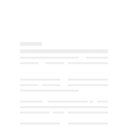Differences in terminal carbohydrate structures of sialomucin in the murine nasal cavity.
Nøgleord
Abstrakt
Terminal carbohydrate structures of sialomucin in the murine nasal cavity were characterized by means of lectin histochemistry. Two kinds of biotinylated lectins (Maackia amurensis agglutinin and Sambucus nigra agglutinin), which recognize sialic acid residues, showed marked differences in their respective labeling patterns when used as epithelial probes. Maackia amurensis agglutinin labeled the epithelial goblet cells, Bowman's glands, and all cell surfaces of both olfactory and respiratory epithelium. In contrast, Sambucus nigra agglutinin labeled cell surfaces and Bowman's glands in the murine olfactory epithelium, but did not label the murine respiratory epithelium. These results indicate that sialomucin in the murine nasal cavity has two different terminal carbohydrate structures. Our data show that sialomucin in the murine respiratory epithelium has a Neu5Ac(alpha 2-3)Gal sequence, while sialomucin in the murine olfactory epithelium has both alpha 2-3 and alpha 2-6 binding sequences. These results suggest that different carbohydrate structures of sialomucin in the nasal cavity may reflect differences in susceptibility to bacterial colonization and viral infection between respiratory and olfactory epithelium, and influence rheological properties of nasal secretion.


